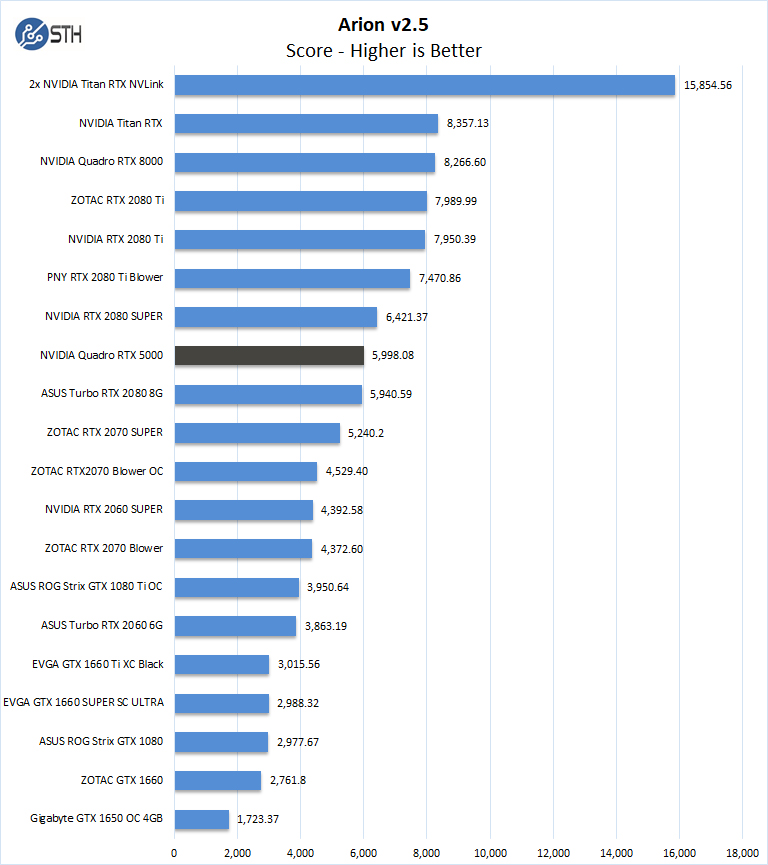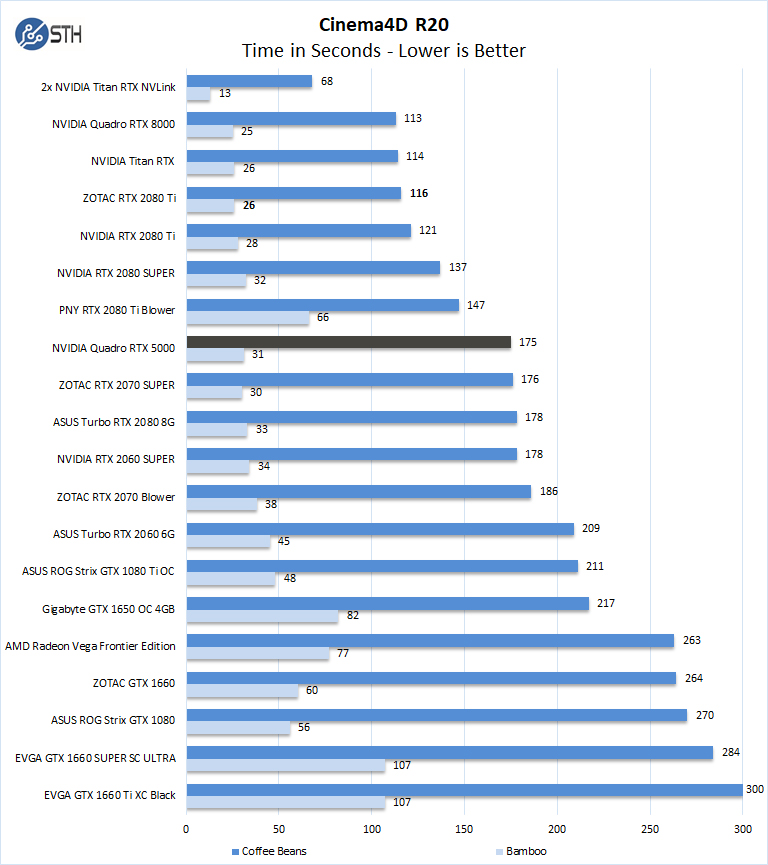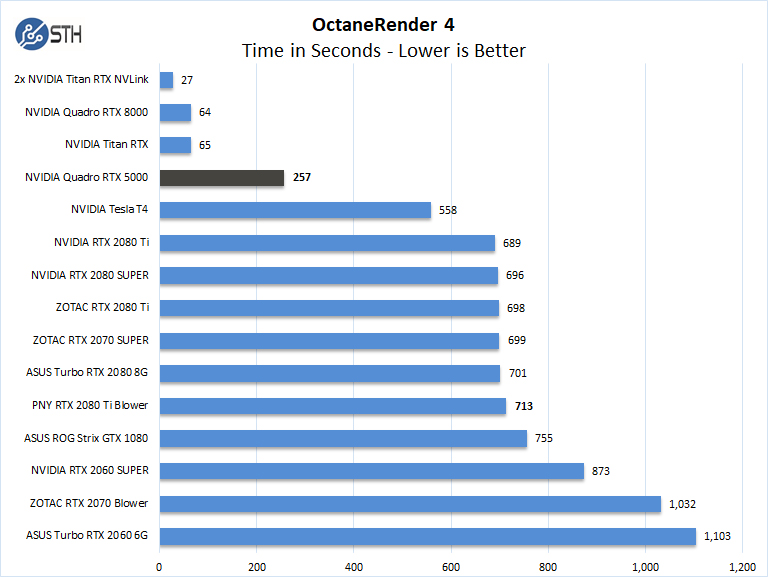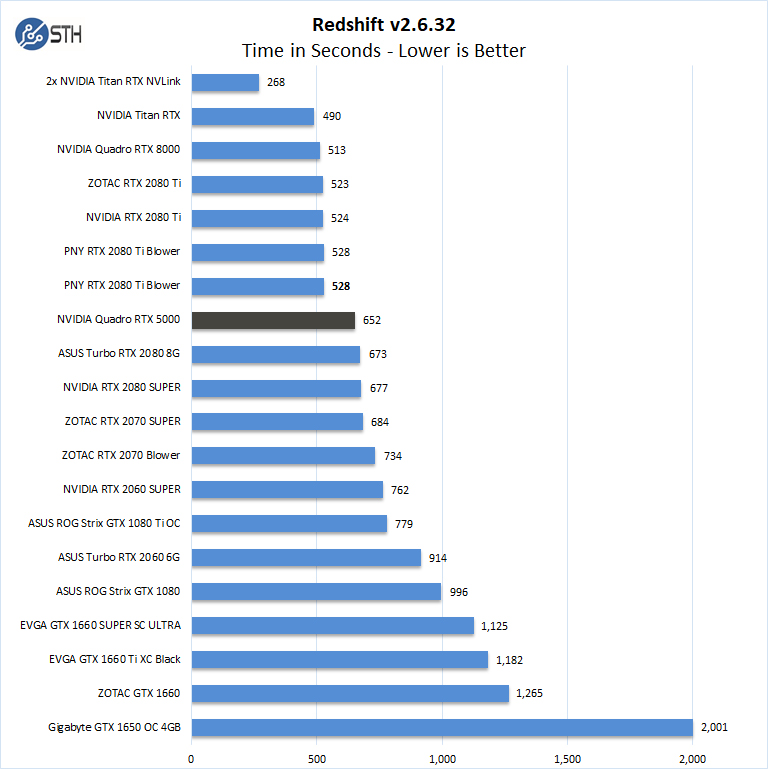NVIDIA Quadro RTX 5000 Rendering Related Benchmarks
Next, we wanted to get a sense of the rendering performance of the NVIDIA Quadro RTX 5000.
Arion v2.5
Arion Benchmark is a standalone render benchmark based on the commercially available Arion render software from RandomControl. The benchmark is GPU-accelerated using NVIDIA CUDA. However, it is unique in that it can run on both NVIDIA GPUs and CPUs.
Download the Arion Benchmark from here. First-time users will have to register to download the benchmark.

Under heavier rendering loads, the NVIDIA Quadro RTX 5000 performance matches the performance of RTX 2080 (Super) GPUs.
MAXON Cinema4D 3D
ProRender is an OpenCL based GPU renderer which is available in MAXON’s Cinema4D 3D animation software. A fully functional 42-day trial version is available for downloaded from the MAXON website here. Note: Even after expiration, the trial can still be used to measure render times.

With a 28 second difference, the NVIDIA Quadro RTX 5000 ranks quickly fall to the bottom of the RTX 2080 Ti series. We did want to note here that we can see the impact of the blower-style cooler (and some clock speed tweaks) when comparing the PNY GeForce RTX 2080 Ti Blower-Style GPU cooler to the mainstream NVIDIA GeForce RTX 2080 Ti dual-fan cooler. These fan designs may seem simple, but they have a large impact on performance.
OctaneRender 4
OctaneRender from Otoy is an unbiased GPU renderer using the CUDA API. The latest release, OctaneRender 4, introduces support for out of core geometry. Octane is available as a standalone rendering application, and a demo version is available for downloaded from the OTOY website here.

With OctaneRender, we find a big jump in the Quadro RTX series, mainly due to the increased memory loadouts, in this case, 432 seconds difference vs. an RTX 2080 Ti.
Redshift v2.6.32
Redshift is a GPU-accelerated renderer with production-quality. A Demo version of this benchmark can be found here.

NVIDIA Quadro RTX 5000 finishes 21 seconds ahead of the RTX 2080 series. The Ti series do offer better performance by as much as 100 seconds.
Next, we will have 3DMark results before moving onto power consumption, thermals, and our final thoughts.




“Certified” most of the times means more expensive for a cheaper alternative. It’s the same chip as used in the Geforce cards and artificial bottlenecked when possible.
The AIDA64 results for double precision seem to indicate like many other cards outside of the V100 price segment that this is an AI and graphics card that is not good for HPC. It would be nice to include the Titan-V in the AIDA64 table to see 64-bit float difference.
Another interesting card, for developers and scientists who don’t have a US$ 13000 budget for a V100 are the Radeon VII cards from AMD which can run CUDA (mostly) with the HIP compiler.
Does AMD still make GPU’s?
They seem to lead the temperature chart here but not much else.
Missed a bit on page 2, should probably say Geforce RTX 2080 Super rather than Geforce RTX Super
@Jim:
Well yes, but not for dinky toys at the moment, they make them for supercomputers like the HPE-Cray/AMD with the El Capitan 2 Exaflop Supercomputer.
Hi William, you still haven’t got your hands on an mi50 or Radeon VII cards yet?